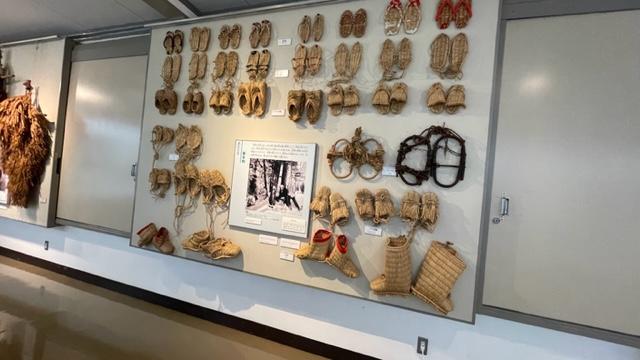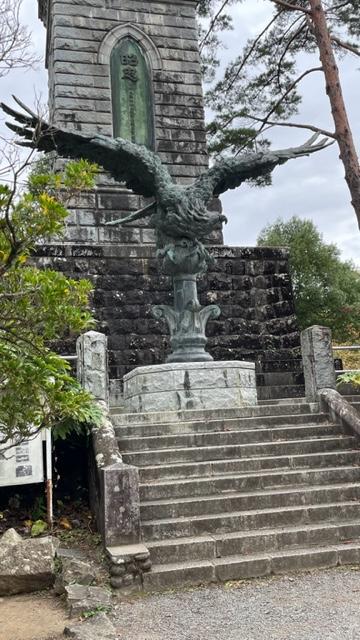Sendai, Japan
Today was more like the Japan I was prepared to see: the classic Japanese shapes of shrines, history of
shoguns and feudal lords dating back to 1600s and further back, and consequences from WW2. What I
didn’t expect was that I was going to enjoy the learning and the seeing and the introspection.
Therefore, dear friends, get ready for lots of photos and lots of stories.
shoguns and feudal lords dating back to 1600s and further back, and consequences from WW2. What I
didn’t expect was that I was going to enjoy the learning and the seeing and the introspection.
Therefore, dear friends, get ready for lots of photos and lots of stories.
As we disembarked for a tour, a group of costumed samurai met us for photos. I didn’t know that
samurai warriors smiled!!!
Sendai is one of the larger cities in the country with about 1 million population. It hosts the third most
prestigious university in Japan, a very modern city center, and is, like all the places we’ve seen so far,
pristine! We visited three important sites in this historic city; as we traveled between, he educated us.
Sendai City was severely bombed in WW2. The city itself rebuilt and the buildings are obviously new
and modern. A few delicacies that people love in this city are green pea paste that is used on top of rice
dumplings or put into milkshakes and beef tongue that is eaten in steak form or in stews.
prestigious university in Japan, a very modern city center, and is, like all the places we’ve seen so far,
pristine! We visited three important sites in this historic city; as we traveled between, he educated us.
Sendai City was severely bombed in WW2. The city itself rebuilt and the buildings are obviously new
and modern. A few delicacies that people love in this city are green pea paste that is used on top of rice
dumplings or put into milkshakes and beef tongue that is eaten in steak form or in stews.
At 8:15 we boarded a nice tourist bus with an enthusiastic guide who had the most common family
name in Japan: Sato. The first thing he did was to hand out business-sized cards with instructions in
Japanese that would inform anyone that the card bearer is lost and please call the tour director at this
number. None of us needed it, but it’s a great idea in a country with such a difficult language and so few
who speak or understand English.
Some army barracks for the Japanese soldiers were occupied by the US after the war was over. We
visited one such barracks site and I’ll attach some photos from the Museum of History and Folklore. The gable roof on this museum shows the Japanese architectural style. Inside, the rifles you’ll see are from the early 20 th Century when Japan had war with Russia. Of jaw-dropping interest in this museum was a vast assortment of footwear used by farmers in 1800-mid 1900’s. Straw was available to them, so they formed any type of footwear out of that substance. If one worked in the rice fields, their footwear was wooden planks like short skis that had perpendicular planks attached so that they could walk through the rice paddies and almost keep their feet dry. Also, note the thick straw raincoats. I was gobsmacked.
A Russian influence was evident in the top shelf holding the nesting dolls with severe farmer faces. Jerry is attempting to be fierce next to one of these. Just in time for Halloween…
The other two sites were associated with Japan’s first and greatest feudal lord, Date (DAH tay)
Masamune (mahs uh MOON nay). First we visited his mausoleum, Zuihoden, that is a tribute to his near god-like popularity. The architecture is from the Edo period—which means it’s traditional. The last site we saw is the area where a castle was that he built and what they think it looked like. It had been
stripped to the ground centuries ago by feuding feudal lords. (no, I don’t think they were leaping)
Busloads of locals were revering these sites as he was instrumental in history. He was multi-talented
and his greatest gifts were in ecology, agriculture, governing, and economics. Because one of his
advisements that each family plant trees, this Sendai City is known now as the City of Forests. There are volumes written on him and each Japanese has his name on their tongue, perhaps as we do with George Washington. His likeness has been sculpted in wood and some artifacts have been kept and found after WW2. Very few signs are translated into English, but one that caught my eye on a museum placard read, “If we have an earthquake, please move away from the large stone artifacts.”
Masamune (mahs uh MOON nay). First we visited his mausoleum, Zuihoden, that is a tribute to his near god-like popularity. The architecture is from the Edo period—which means it’s traditional. The last site we saw is the area where a castle was that he built and what they think it looked like. It had been
stripped to the ground centuries ago by feuding feudal lords. (no, I don’t think they were leaping)
Busloads of locals were revering these sites as he was instrumental in history. He was multi-talented
and his greatest gifts were in ecology, agriculture, governing, and economics. Because one of his
advisements that each family plant trees, this Sendai City is known now as the City of Forests. There are volumes written on him and each Japanese has his name on their tongue, perhaps as we do with George Washington. His likeness has been sculpted in wood and some artifacts have been kept and found after WW2. Very few signs are translated into English, but one that caught my eye on a museum placard read, “If we have an earthquake, please move away from the large stone artifacts.”
I’m always interested in how cultures deal with death and dying. So you’ll see some photos from a
cemetery. Looks like many of those buried were Buddhist. Because we arrived back to the ship by 1:30, we had time for a nap and a few hours of bridge with our bridge instructors who leave us on Sunday in Tokyo.
cemetery. Looks like many of those buried were Buddhist. Because we arrived back to the ship by 1:30, we had time for a nap and a few hours of bridge with our bridge instructors who leave us on Sunday in Tokyo.



















Comments
Post a Comment